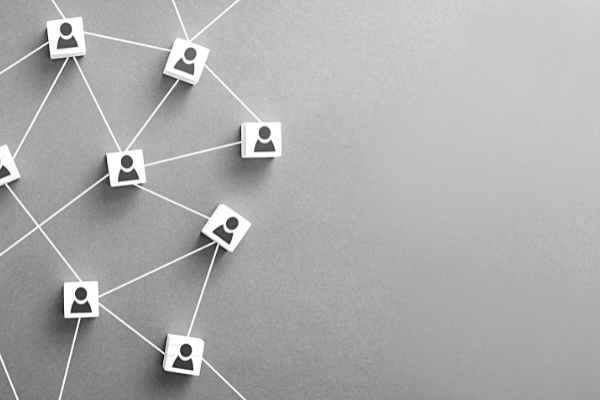“When disruption happens, great change and innovation happen even more quickly.” -Mina Worthington
There’s no question that the past year has brought with it a tremendous amount of disruption and even turmoil for some. But there is no better opportunity to rebuild stronger, bolder, and with more intention than during a period of such transformation.
Remember The Great Pause.
When disruption happens, it acts as an accelerant for change. Especially for community banks and credit unions, it's so easy to get stuck in the cave of complacency because it feels safe and secure.
But complacency can be deadly — particularly with the exponential change that’s happening in this new, post-COVID world. Mina Worthington, President/CEO at Solarity Credit Union, and her team have continued to make digital growth progress for years, but it hasn't happened overnight.
So when disruption becomes the status quo, how do financial institutions rally and push forward? It’s about vision, which provides a sense of focus and a sense of purpose, setting the tone for any financial brand on a digital journey.
Everyone Deserves a Place of Their Own
What's the key to the continued growth Mina and her team have experienced at Solarity Bank?
“Everyone has a place of their own to call home.”
Solarity Bank does a great deal of home loan lending. And what matters here? The feeling that surrounds the concept of home.
Customers have been spending far more time at home lately, given this unprecedented environment. One of the positive things that has come out of this extended time at home is that many consumers are working hard to make this a more enjoyable experience; they are making improvements on their homes — likely because they've had the time and the energy to do so!
For many local banks and credit unions, this is the perfect chance to connect and serve their customers. As Mina shared, “Life is busy and messy and unpredictable, and we want to make, at Solarity, conducting financial transactions as seamless as possible for our members so that they can spend more time doing the things that they love with the people that they love in their homes.”
Essentially? It's about emotion. Some financial brand leaders may feel uncomfortable leaning into emotion when it comes to money and finances, but this should be seen as a strength, not a weakness.
Let's face it, products and services are commodities in the financial industry, with only price as a differentiating factor. But the world has changed along with consumers' expectations.
As Mina put it, “It's not about, ‘These are the products and services we offer at the prices that we offer, and now you choose between mine and the one down the street.’ Now it's about, ‘Where can I do business that my values resonate with the values of the organization? Where can I do business where I feel like I have value or that I'm valued and I get value in return?’”
And values? Vision? Feeling seen and heard? None of that is about price.
The consumer mindset has changed a great deal. Products and services aren’t the keys anymore. Experience is now the key. And during a period of social distancing, a positive, memorable digital experience is crucial.
Overcoming COVID-19 Issues
COVID-19 has truly laid bare the ways that a great digital-first experience can propel an organization forward. Like everyone else, Mina and her team encountered challenges and roadblocks, especially when it came to the lead conversion ecosystem. For Mina, this inspired her to take action.
Mina and her colleagues already knew that producing quality home loans from their generated leads took the entire ecosystem. They also knew that doing business digitally against some of the biggest digital players like Rocket Mortgage and Better Mortgage took a very niched approach.
After all, originating home loans digitally with any scale starts with a seamless digital experience — a simple search that ends with a member who is completely satisfied, has closed a loan, and is now willing to refer their friends and family.
To work towards this goal, especially in a post-COVID world, Mina and her team are pivoting their efforts, bringing forth innovations like e-closings. They’re using disruption to push innovation. And now, all across the country, new legislation has been passed to allow closing processes like eNotary and eVault so that clients can go through the entire mortgage loan closing process electronically — and safely.
Currently, Mina’s organization is working with a hybrid approach right now, but even that has been a smashing success with clients: They love signing the documents electronically and are enjoying the entire hybrid process.
As Mina shared, “It's really been a great catalyst for a really complicated transaction, a mortgage loan. Just imagine the other types of transactions that we do in financial services, that this could be a catalyst for — having them happen electronically or digitally.”
The COVID-19 pandemic forced Mina and her team to rethink everything and create a whole new pilot program, which can then extend to the other product lines. This can be a transformative experience, both for the credit union and for the people that they are serving, to make their lives even that much better than they were before.
A Digital Growth and Marketing Learning Lesson
On their digital growth journey, Mina and her team inadvertently stepped into a lesson. Those who have ventured into the world of digital marketing know well, one can spend a lot of money with very few results. Mina and her team were working with a third party but just not seeing the impact they wanted.
At the Digital Growth Institute, there have been dozens of times that we have gone in and diagnosed a financial brand's digital marketing efforts, and they're working with a third party.
There's nothing wrong with that, but if you don't have that core competency internally to at least oversight, you're at a big risk for getting sold, ‘Hey, well, we got you this much audience reach, and we got you this many clicks.’”
The problem? We have to look beyond vanity metrics to track conversions.
The other issue when it comes to encouraging digital growth for some institutions comes from a wariness of how effective it will be.
We've often seen this type of thinking: "Oh, we've dabbled in digital. We've done these ads, but it just didn't work. And you know what? We're not going to do it again."
They look at it as a negative experience and not a learning experience.
Mina explained though that these are the perfect opportunities to learn and grow, sharing that “The future business is a digital business, and that you're going to have to pay some tuition to figure out how to run that digital business. That's the cost of doing business; [it’s] the tuition you pay to figure that stuff out.”

She continued, “Reverting back to the old way is not going to move your organization into the future, the way it needs to be moved.”
Don't go back into the cave of complacency.
Have the courage to continue to venture out, knowing that there are going to be some lessons you learn.
Gaining Clarity in a Busy Digital World
When it comes to reaching customers online, so much is changing, and it feels as though it's happening faster and faster. There’s an increasing list of acronyms to memorize: SEO and SEM and PPC, plus marketing automation and CRM. Every month it seems like there's something new to do.
But Mina shared that there's only one thing to master. Focus.
Focus is about toning down all of the digital noise and digital distraction to gain clarity. This allows organizations to focus on just a few things but be the best at those few things.
Mina explained, “At first, you have to create that compelling vision around that one thing, the ‘why’ that engages your team emotionally and gets them behind the effort.” The team had to make some hard choices about how finite resources get spent.
Purpose is at the heart of the digital growth blueprint, so is it possible to bypass engaging organization-wide sharing of a singular focus? Is digital growth possible without this kind of concentration?
Not unless you want to end up being what everybody else is, which is a financial institution that has mobile banking and online banking.
And what gets lost in the process is experience.
The future of business is a digital business. Banking is still about relationships and community, but it has to happen digitally now too.
It's a digital experience plus a human experience. With technology as nothing more than the medium, to bring two people together for good.
The Human Side of Business
Even as communities are created online, banks and credit unions are made and broken by the people running them — from the top down.
Culture always starts with people.
This means that now is the time to hire people who understand that the future of business is based in technology. After all, organizations can create digital strategies, but they mean nothing if they aren’t embraced by the entire team.
As Mina shared, "Culture eats strategy for breakfast."
The shift of a credit union becoming a technology company that offers financial services is, no doubt, a huge cultural shift for this industry. To be successful, the entire team must believe that the future of business is digital.
When asked how she planned to take this cultural shift forward, Mina shared that now is the time to grow outside of current markets. She explained, “Success to me, first and foremost, looks like we were succeeding at and expanding into markets where our brand was previously unknown.”
Business is being conducted through digital channels.
Physical locations come second.
Providing a Sense of Financial Wellbeing
Financial services can be compared to healthcare. Consider a person’s physical health — that everything is fine until they are unwell.
The same can be said of a consumer’s financial wellbeing. Consumers need a sense of safety and security, and banks need to be able to resonate with people online — to do business without the guarantee of the safety and security of a physical location.
With the right tools in place to build consumer confidence and trust, banks have a chance in the years to come to help consumers build financial security no matter whether they are reaching them online or in person. Either way, there are sure to exponential opportunities to help their customers grow and develop — as long as you remember that change is always a chance for growth.
This article was originally published on April 23, 2021. All content © 2024 by Digital Growth Institute and may not be reproduced by any means without permission.





